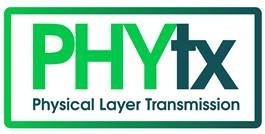| WT/MD/SD# | Bonding Projects
| Abstract | Related Contributions | Editors |
|---|
DTP-337i4 | G.fast Certification Test Plan | This document is intended to provide a certification test plan for ITU‑T Recommendation G.9700 “Fast access to subscriber terminals (G.fast) – Power spectral density specification” and G.9701 “Fast access to subscriber terminals (G.fast) – Physical layer specification”. This IR-337 is specifically conceived for the basic interoperability objectives of the Broadband Forum G.fast Certification Program. Technical content in this test plan includes test setup information, equipment configuration requirements, test procedures, and pass/fail requirements for each test case. Issue 4 intends to add Robust Management Channel Recovery (RMCR) and sub-carrier masking tests, tests for Low power operation and tests for accuracy and updating of reported G.fast parameters. | DTP-337 | Frank Van der Putten |
| OD-335 | G.fast Interop Plugfest Test Plan | Interoperability among multiple chipsets and systems will be critical to the success of G.fast. This document defines a suite of basic physical layer tests for G.fast. The intent is to provide a structure for vendor-to-vendor interoperability tests, known as "Plugfests". | OD-335 | |
| WT-338i3 | Reverse Power Feed (RPF) Test Plan | With short copper loops required by G.fast Distribution Point Units (DPUs) that push the deployment of the DPU/MDUs closer to the customer premise, local power and forward power may not be viable to cost or location. To power the DPU, power will come from the customer premises location over the copper pair; this is referred to as Reverse Power Feed (RPF). This document specifies tests for the RPF functions of a DPU and the customer premises’ Power Supply Equipment (PSE) either as a stand-alone device or as a function integrated in a G.fast Network Termination. Issue 3 will define a set of RPF-over-coax functional and safety test cases for the Power Source Equipment (PSE) implemented according to ETSI specification TS 101 548-2, either as a stand-alone device or as a function integrated in the G.fast (G.9700 and G.9701) network termination, and reversely powered DPU implementations. It will include also RPF integrated in G.hn Access and MoCA Access network termination. | WT-338 | Helge Tiainen |
OD-362 | Program Requirements for G.fast Certification Program | This document applies only to the operational aspects of the certification program, such as: - What information, equipment, and support is required by companies submitting products for certification.
- Features, test modes, and interfaces required on/for devices being submitted for certification testing.
- How companies may certify similar equipment, such as derivative works or models with a subset of features.
- How companies with certified products may use the certification logo and other documentation about the certification program.
| OD-362 | Lincoln Lavoie